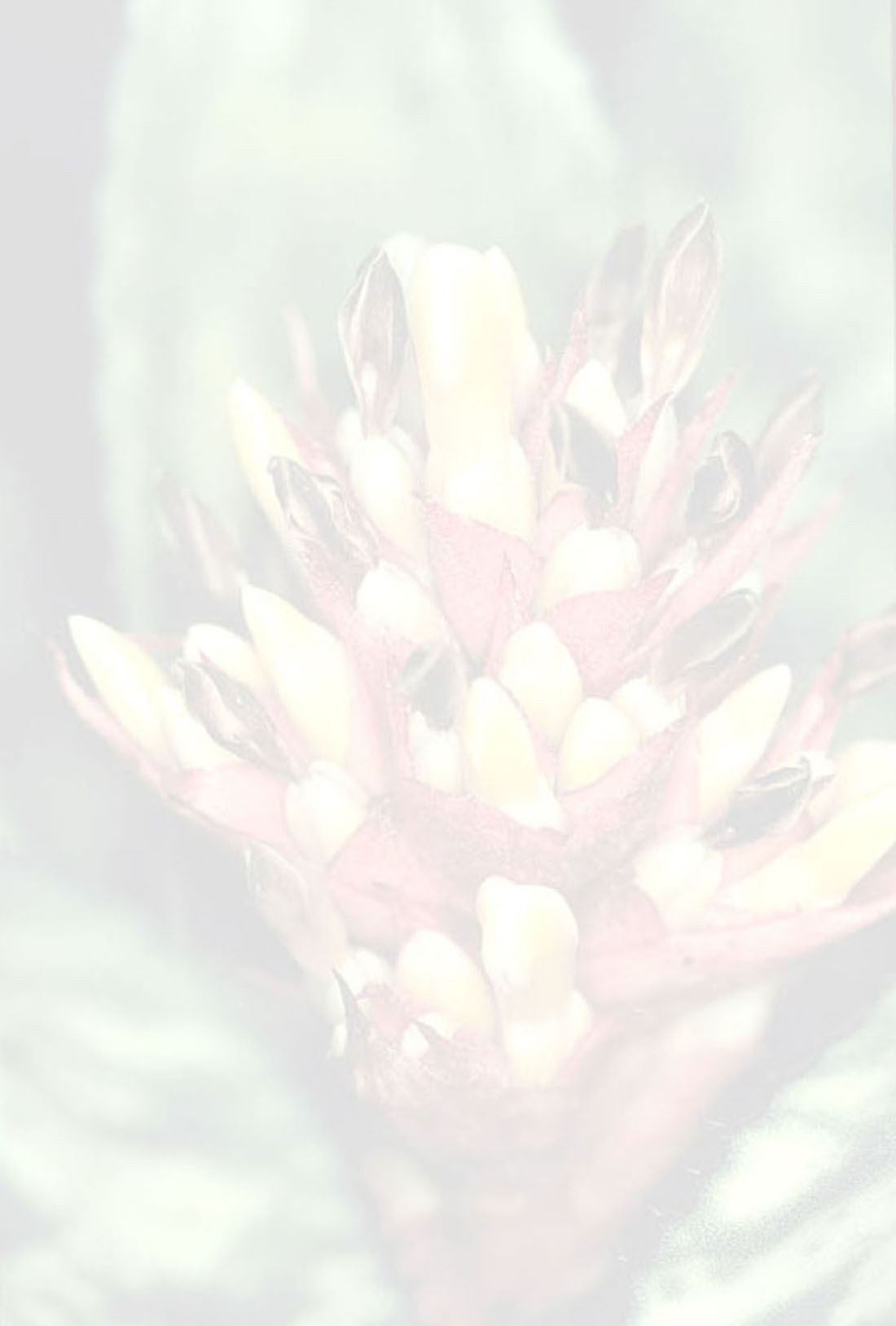

 Aechmea meeana E.Pereira & Reitz[as Aechmea meeana E. Pereira & Reitz]
Aechmea meeana E.Pereira & Reitz[as Aechmea meeana E. Pereira & Reitz]Observations: —From Gouda in Selbyana 20(1): 2000
Aechmea meeana, has to be considered a synonym of A. rodrigueziana (L.B. Sm.) L.B. Sm. (Type: W. Rodrigues 5399, Brazil, Amazonas, Reserva Florestal Ducke, Manaus). Although A. rodrigueziana was originally described in the genus Gravisia (=Aechmea), later it was wrongly placed in the subgenus Chevaliera by L.B. Smith (Smith & Downs 1979), likely because of the lack of petals in the known material and because it resembles Aechmea digitata L.B. Sm. & R. W. Read. This would explain why E. Pereira & Reitz were not aware of this species when they described A. meeana (all species of Gravisia, except G. rodrigueziana L.B. Sm. are placed in Aechmea subgenus Aechmea). The inflorescences in the types of both species are in different stage of development. The type of A. rodrigueziana is in fruiting stage and therefore looking more robust than the type specimen of A. meeana , see figxx and xx. Most of the fruits are already gone, probably taken out by birds. there is no difference in flower characteristics (floral bracts, ovary and sepals), and both have the characteristic dark brown leaf sheaths, with robust spines on the base of the blades. the typical castaneous peduncle-bracts abruptly ending in a very stout spine. It is obviously one and the same species.
There is some confusion about two of Margaret Mee's paintings in her book In Search of Flowers of the Amazon Forests (Mee 1988, Baensch 1994) and it was also published on the cover of the Journal of the German Bromeliad Society, "Die Bromelie" 3/1993. The type of Aechmea meeana (HB, photo US) does not appear to be conspecific with the specimen used as the basis for Margaret Mee's painting. The painting was based on a collection from Rio Marau, March 1973 (=type locality of A. meeana), but several months after the type was collected. This painting is more representative of Aechmea polyantha E. Pereira & Reitz, which is also based on a Mee collection (M Mee 72, see note about this species ). In A. meeana, the inflorescence spikes are fasciculate ( digitate) and the floral bracts are relatively large, covering most of the flowers. The inflorescence of A. polyantha is more elongated (remotely branching) and the flowers are much exceeding the floral bracts.Edited from (03-12-2014): Smith & Downs 1979. Bromelioideae (Bromeliaceae) in Flora Neotropica.